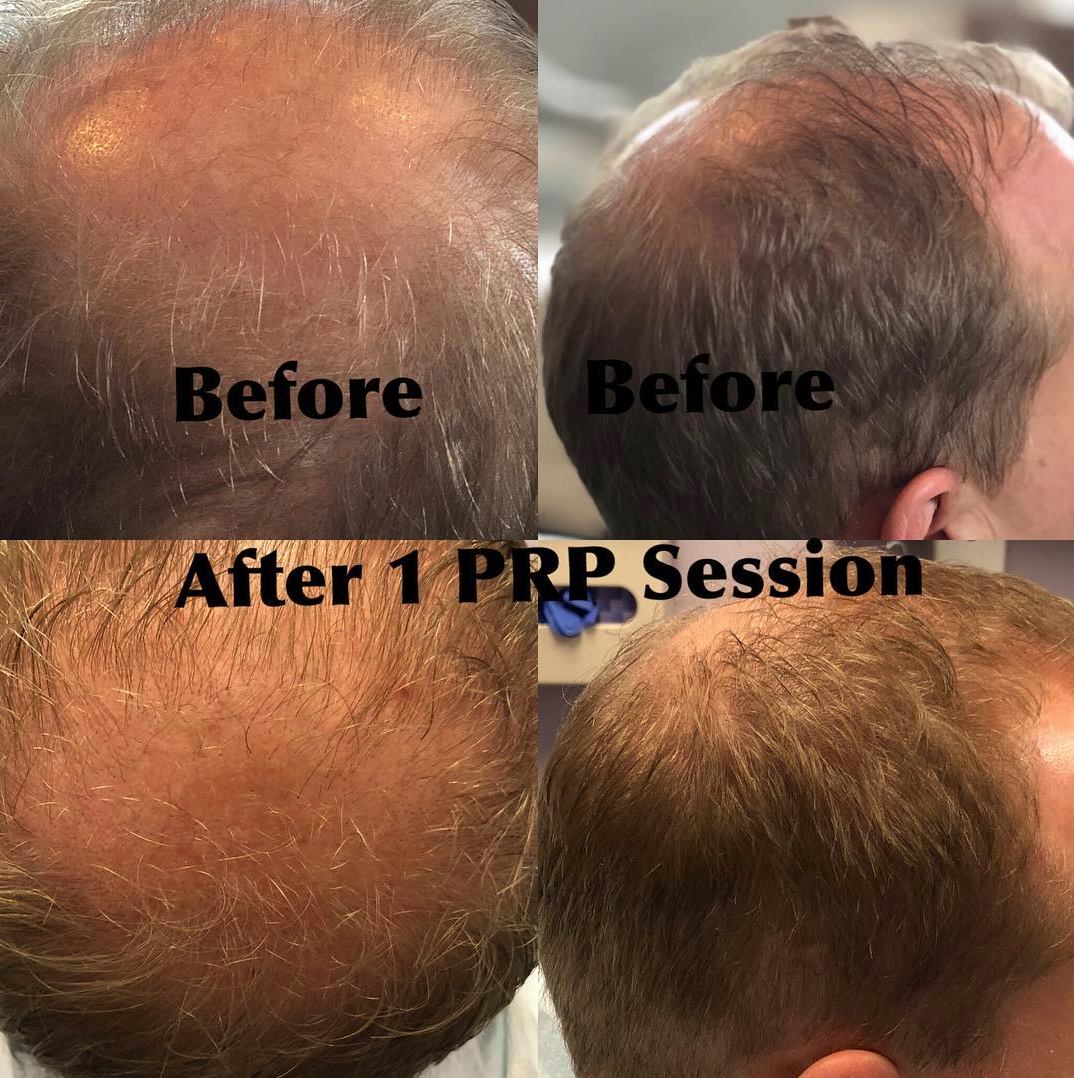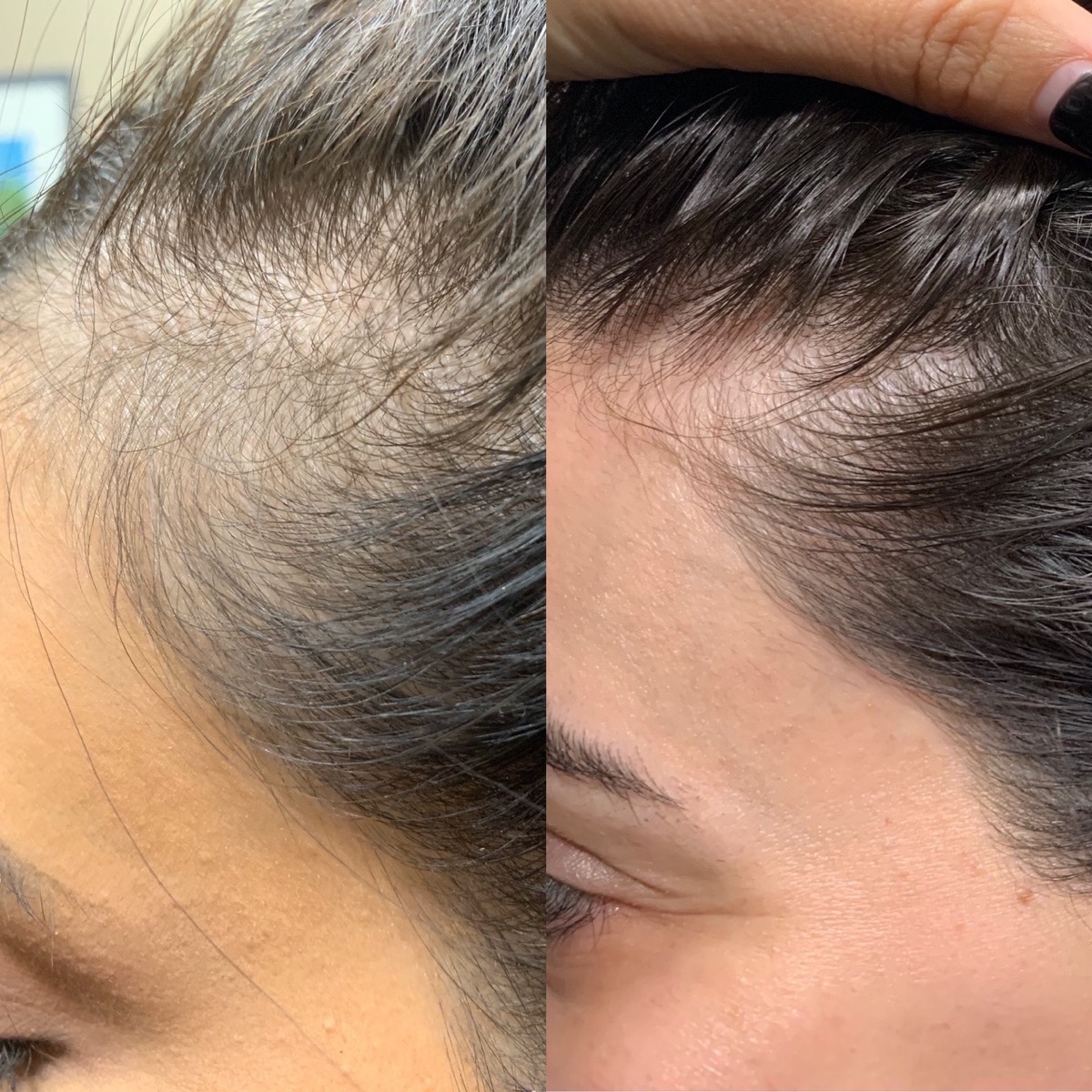Table Of Content

As with almost all non-surgical treatments for hair loss, the best candidates are those with thinning hair rather than complete baldness and for those who have experienced more recent hair loss. Thinning hair is more common in younger individuals, but anyone with thinning hair loss may benefit from the treatment. As noted earlier, individuals with naturally high platelet levels have an advantage over those with lower platelet levels, as the quantity of growth factors administered will be greater in the former group. Platelets are blood-cell fragments that are critical to normal blood clotting function and that also contain several different growth factors.
Causes and Risk Factors for Androgenetic Alopecia
Firstly, your physician will inject your scalp with local anesthesia to make it numb enough for you to not feel anything during PRP injection. ➡ With its rich history, the PRP technique has a favorable rate for effectiveness in many fields, from sports to dermatology. Due to the downward trend in respiratory viruses in Maryland, masking is no longer required but remains strongly recommended in Johns Hopkins Medicine clinical locations in Maryland. By Lindsay CurtisCurtis is a writer with over 20 years of experience focused on mental health, sexual health, cancer care, and spinal health. Doctors and researchers also need to identify the best candidates for PRP and develop universal treatment protocols.
Articles on Health
But he says to be truthful about your skin conditions and lifestyle to understand the frequency of your facial needs. And ideally, you can go every 2-3 weeks for maintenance or to address evolving needs. How do you time a facial, in terms of ensuring you have the best results ahead of some big event Simone recommends having a facial 4-5 days ahead of time, especially if you don’t really do much skin care at home. “If a person already treats their skin at home regularly, then the facial can be done just a day or two prior to the event,” he says. Dozens of over-the-counter supplements and products purport to reverse hair loss, making it tough for patients to know which ones work and which don’t. When PRP is injected after an injury, your doctor may recommend that you rest the affected area.
PRP for Hair Loss

There are various reasons why people experience hair loss, from hereditary conditions to hormone changes, damaging hair styles, and autoimmune diseases. While PRP treatments for hair loss are most commonly performed on women, they are also available for men and young adults ages 16 and older who are struggling with hair loss. Learn more about the latest hair growth research, new hair loss treatments, and much more.
Best Hair-Loss Treatments That Don't Require Surgery, Ranked by Doctors - Business Insider
Best Hair-Loss Treatments That Don't Require Surgery, Ranked by Doctors.
Posted: Fri, 21 Jul 2023 07:00:00 GMT [source]
Will Popular Hair-Loss Products Help My Alopecia?
When injected into the scalp, PRP delivers a concentrated dose of growth factors that can stimulate hair follicles and prolong the growth phase of the hair cycle. The growth factors in PRP may also help reduce inflammation and improve blood flow to the scalp. During a PRP session, a technician draws blood, usually from a patient’s arm. Plasma is a substance found in the blood that contains platelets, which promote hair growth, according to the Cleveland Clinic.
How Is PRP Used for Hair Loss?
As mentioned above, any benefits noted will only be maintained if ongoing treatments are maintained. The exact mechanism of action for how PRP promotes hair growth is unknown. PRP contains at least six different growth factors, and the individual and synergistic effects of these proteins on hair growth cannot easily be identified. In addition, PRP contains at least 30 other substances, including chemokines, clotting factors, and immune mediators, all or some of which may influence hair growth as well. Growth factors in PRP that are most involved in hair growth include Fibroblast Growth Factor (FGF), Vascular Endothelial Growth Factor (VEGF), and Epidermal Growth Factor (EGF). Growth factors can increase the duration of the anagen, the growth phase of hair, and may increase the thickness of the hair shaft.

Research suggests that injecting areas of inflammation or tissue damage with high concentrations of platelets can encourage new tissue growth and promote overall cellular healing. In conclusion, Platelet-Rich Plasma (PRP) treatment represents a promising option for individuals grappling with hair loss. It is vital to consult with a Dermatologist to ascertain whether PRP is suitable for your unique needs. While PRP has demonstrated positive outcomes for many, individual experiences may vary.
Still, the authors conclude that more research is necessary to fully assess the efficacy of the treatment. However, this was only a small-scale study, and further controlled research is necessary to fully assess the efficacy of PRP in hair growth. A 2015 study reports that males receiving PRP treatment grew more hair, and with significantly more density, than males who did not get the treatment. To prepare a PRP injection, a medical professional will take a sample of a person’s blood.
Hair loss shows up in different places and is treated differently depending on whether you’re a man or a woman. Khetarpal estimates each treatment will cost $600 to $1,500 out of pocket, depending on where you live. That adds up because, to see results, you have to commit to about four treatments in your first year. That PRP gets injected into the thinning patches of your scalp where you need some help getting the garden growing again. Platelet rich plasma is one of the most exciting and relatively new areas of cosmetic medicine and surgery. Treatments are typically performed once a month for the first three to four months, and then every three to six months thereafter, depending on the individual patient's response and results.
It’s important to speak with a healthcare professional about PRP therapy before starting treatment. During your appointment, tell them about all the medications you’re on, including supplements and herbs. PRP therapy injects platelet-rich plasma cells into the affected area of your scalp. Best PRP in Dubai is a treatment cycle in which specialists infuse a patient’s own plasma into various pieces of the patient’s body to advance recuperating and development. It’s not only for hair — it very well may be utilized in ligaments, tendons, and muscles, as well.
Thus, local and temporary pain at the injection sites is the principal risk. Learn about the latest hair growth research, new hair loss treatment solutions, and much more. Triamcinolone acetonide, a steroid medication used to treat skin conditions and certain types of alopecia (mainly alopecia areata), has been used in conjunction with PRP with promising results. (13) However, it’s important to remember these combination treatments are not yet approved as safe and more research is needed. Topical minoxidil is a popular treatment for hair loss and baldness, but some dermatologists are now prescribing this medication orally. Historically, doctors have been able to stall or reverse hair loss by prescribing medicine or performing a hair transplant procedure, according to the American Academy of Dermatology.
Plasma therapy is one of the advanced therapies used to effectively address hair loss, both on its own and in conjunction with hair restoration, since the early 2000’s and has demonstrated promising results. Talk to a doctor about getting your blood tested for platelets and checking your hair health to see if you’re a good fit for PRP injection therapy. Based on the research and my experience as a dermatologist, PRP can be a very suitable way to support your scalp and promote hair growth. As one of the most significant studies of PRP vs hair loss done on female patients, this study did not return any positive results too.

No comments:
Post a Comment